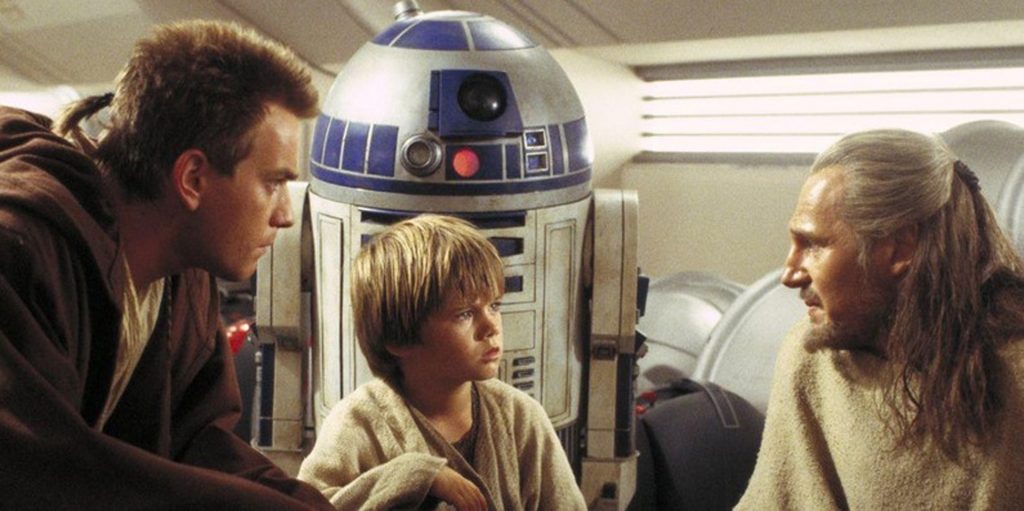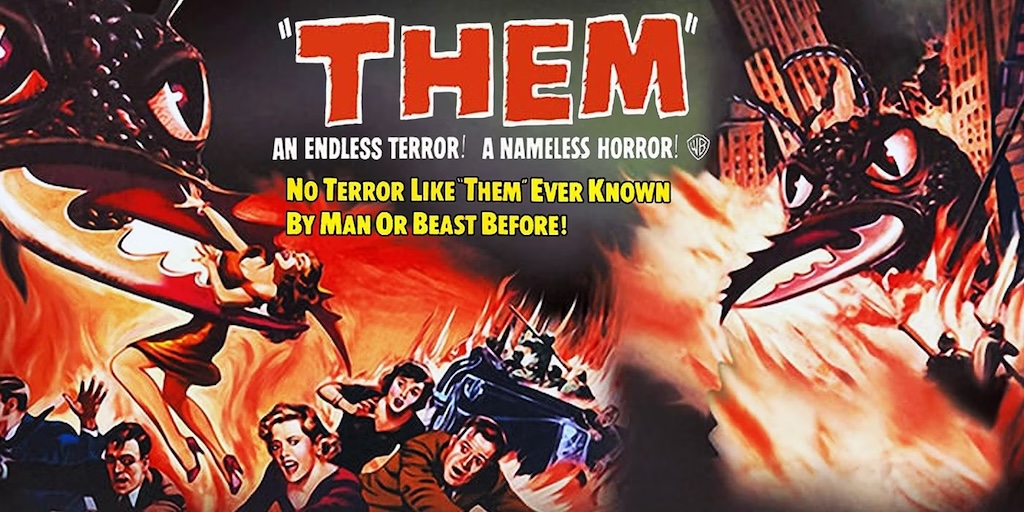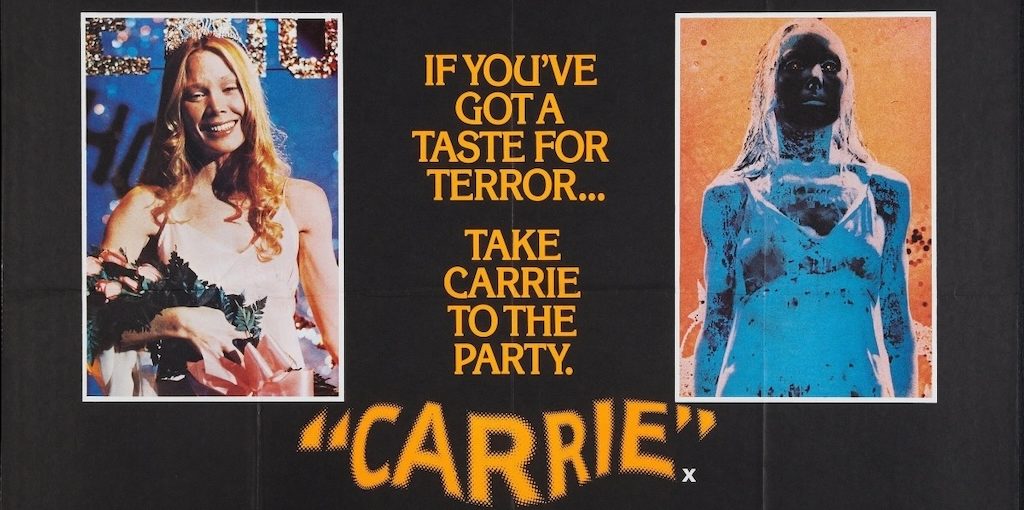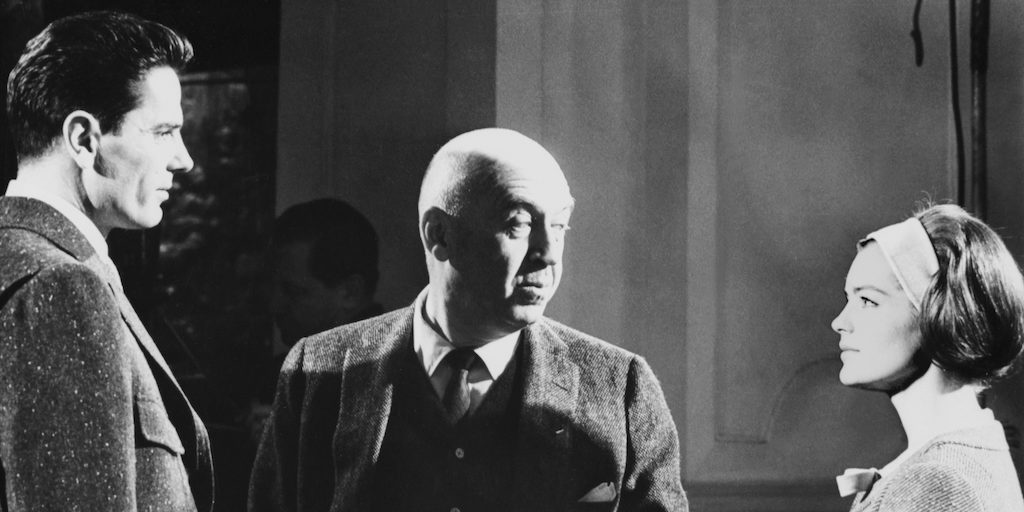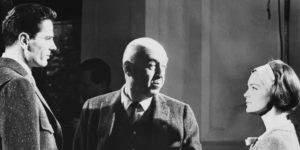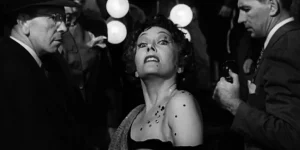I hadn’t watched Episode I: The Phantom Menace since it premiered in 1999, so my memory of it was particularly blurry. I did have a much clearer memory of its promotional images and the expectations that were put on it before its premiere. The posters and products with the figure of Darth Maul, Ewan Mcgregor’s promotional photos as Obi Wan Kenobi, the Jar Jar Binks doll, and especially that famous poster of Anakin Skywalker walking through the desert while behind him the shadow of Darth Vader was drawn.
I verified in its recent and new viewing that having a clearer memory of the promotion than that of the film itself made a certain sense, the same as the fact that the famous poster of Episode I with Anakin and the shadow today is much more memorable than any single scene in the movie. Both things are a reflection of what Episode I really was: a masterpiece in marketing long before cinema. This was partly thanks to previous Star Wars, and partly thanks to the advertisers’ abilities. Episode I draws on the three previous films that had managed to become part of the collective imagination in an impressive way. Even though I am far from being a fan of them, as Jean Cocteau said at some point, I have the minimum respect that must be shown toward works that have somehow managed to connect with a large audience. They are films that, to a greater or lesser extent, have had the intelligence to target a very massive sensitivity and for this reason they must be watched, if not with reverence, at least without contempt.
When the premiere of a new Star Wars saga was announced in 1997, millions of fans around the world were waiting to see Darth Vader again, for the Skywalker surname and Yoda’s particular tone of voice and way of speaking to resound again. Then the laser swords, the Force, the fights in space and an iconography known even by people who had never seen the saga would come. It seemed (and probably would have happened) that Episode I could have produced a box office success even if Lucas hadn’t released any previous trailers or even a single poster; and had just made an announcement in the press stating the day of the premiere. However, and logically, that was not the case. On the contrary: 20 million dollars were invested in advertising maneuvers and what is called in marketing “the drip strategy” was implemented, consisting of giving information little by little, releasing some new information from time to time: a casting decision, news about the production, the announcement of some new character.
When the film was finally released, the level of expectation was so high that the only thing that could have satisfied the fanatical anxiety was one of those instant masterpieces that happen every once in a while and that the viewer perceives as immediate classics. But Episode I ended up being pretty much the opposite.
There is almost nothing that works in Episode I. Its production design and sets are visually ugly, with shots full of saturated colors which remind of a screen saver and make one miss the baroque, more Western-bound world of the previous films. And this visual aspect is far from being the worst of the problems. Jar Jar Binks, for example, is an awful comic relief, an infinite imbecile without a redeemable trait -neither a secret intelligence, nor an iota of nobility or brave attitude- whom the story arbitrarily makes general of an army, only so that he can be seen doing stupid things. Jake Lloyd, the actor who plays little Anakin Skywalker, is incapable of the slightest expressive ability, something that is especially evident in the most sentimental scenes (such as those where he says goodbye to his mother), or in the dialogues he maintains opposite talented actors such as Liam Neeson or Ewan Mcgregor; and Darth Maul, a villain with a disturbing face who promises to be a spectacular sadist, barely ends up being in the story for a couple of sword scenes. Still, there is a key flaw in Episode I, one of those moments where the movie unintentionally reveals the core of all its problems. This is the moment in which the Jedi played by Liam Neeson extracts a blood sample from little Anakin and sends it for analysis. When he does so, he concludes that Anakin may be a great Jedi because he has a high blood level of something called Midichlorians. This is how suddenly, that magical element called “The Force” became the result of something genetic that could be deduced through clinical analysis. This ludicrous, even outrageous decision sums up what Episode I is very well: a cold film that packages a product made with the most expensive CGI, with hooking characters but without risk or folly of any kind. That is why “The Force” is no longer that vague category that expressed a cheap spiritualism but also a genuine risk in the Star Wars of the 70s and 80s: now it is something visible under the microscope and measurable with a program.
Now, does this make Episode I a flop? No and yes. No, because this sum of flaws does not necessarily make it a totally horrendous movie. For that, Episode I would not have to have anything good, and the truth is that Lucas’ film has a couple of merits in its action scenes. More specifically in Anakin Skywalker’s career (a clear moment of action, characterized by a virtuous edition and a lot of suspense), and in the last lightsaber fight, which is one of the most spectacular of the whole saga.
But oddly enough, this characteristic of a film with virtues and flaws, with momentary successes but generally bad, ends up turning Episode I into another failed film, one of those that is seen thousands of times. And there was perhaps the biggest problem, the biggest disappointment.
In 1999, many people went to see a historical film and simply found a film, one more among many, that does not even have the memorable characteristic that the great cinematographic catastrophes could have had. In fact, Episode I suffers from the most common defect that great mediocre action productions that are released from time to time tend to have: the careful construction of a story in the main action scenes, and becoming lazy and obvious in the rest of the footage.
Of course, none of this prevented Episode I from being a global success and the highest grossing film of that year. And this also proved what everyone more or less already knew: that the mediocrity of a product is not going to generate an industrial failure because in these cases its quality as an event is stronger than its result.
This had been confirmed in some specific cases before Episode I, and it continued to be proved much more frequently in the more mainstream cinema of the 21st century. So finally, twenty years after its premiere, not even in that did Episode I end up being unique. Just a mediocre and bleak product, cast in an epic and fairy-tale cosmogony that, for better or worse, has earned a place of transcendence.

